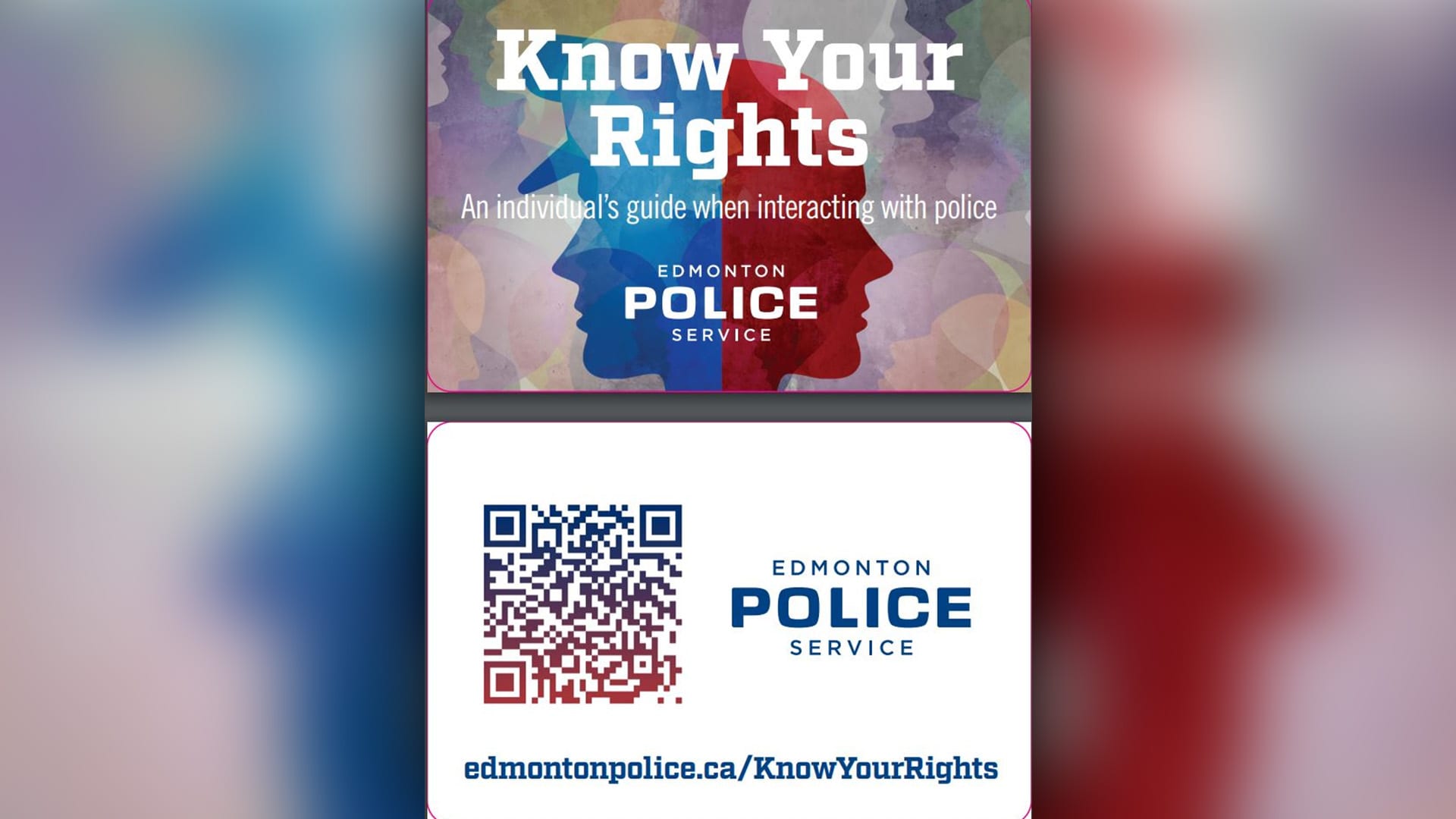Following in the footsteps of the Native Counselling Services of Alberta (NCSA), the Edmonton Police Service (EPS) is also offering pocket brochures and wallet sized cards with QR codes that direct you to the EPS Know Your Rights webpage.
The page lists what your rights are when dealing with a police officer.
“EPS police officers need to engage with members of the public if they are to learn about the communities they serve,” the web site says.
“It’s important to know what your rights are, as well as what an EPS officer’s roles and responsibilities are when you’re interacting with them.”
Rights such as allowing you to walk away if you are not detained or arrested, or saying no to a search unless you are being detained or arrested.

Insp. Mitchell Flamon says the Edmonton Police have listened to the public.
“When we are talking to members of the community, they want more information and transparency with how police interact with them on the street,” Flamon said during a Zoom press conference.
“So whether it’s the officer approaching someone on the street to have a conversation, they are under no obligation to provide any information to that officer, versus a person under arrest, and are required to provide certain pieces of information. So that may change depending on the circumstances.” says Flamon.
The card is similar to the one recently redesigned at the NCSA.
They have a Statement to Police Card that has a paragraph that can be read to police advising of your rights.
The organization says it’s supportive of the police card initiative.
“We hope the brochures and cards find their way into the hands of as many Edmontonians as possible to help foster respect and mutual responsibility,” said Daena Crosby, director of legal education at the NCSA.
Flamon hopes the Know Your Rights campaign will improve relationships between the police and the public.
“With hopes it will create transparency, encourage open and respectful dialogue between officers and the community they serve,” he said.










